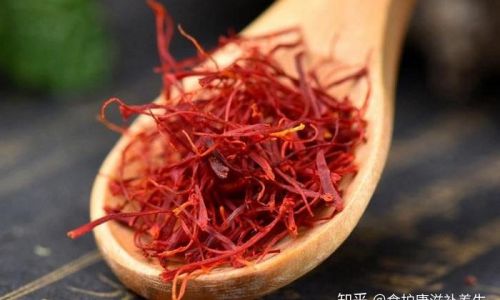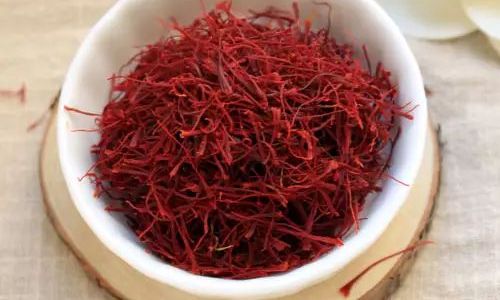Introduction
Stir-fried lotus root, a beloved dish in Asian cuisine, is celebrated for its satisfying crunch, delicate sweetness, and ability to absorb flavors beautifully. Often referred to as “lotus root chips” or “crispy lotus root slices,” this versatile vegetable can transform a simple meal into a culinary delight. Whether you’re a seasoned home cook or a curious novice, mastering the technique of stir-frying lotus root opens doors to a world of textures and tastes. This article delves into the history, preparation, and execution of this dish, ensuring your results are consistently golden, crispy, and bursting with umami.
The Allure of Lotus Root
Lotus root, scientifically known as Nelumbo nucifera, is the edible rhizome of the lotus plant. Revered in many cultures for its symbolic association with purity and enlightenment, it also boasts impressive nutritional benefits. Rich in dietary fiber, vitamin C, and essential minerals like potassium and iron, lotus root is as nourishing as it is delicious. Its distinctive appearance—characterized by a series of hollow, air-filled chambers—makes it visually striking, while its crisp texture remains intact even after cooking, a rarity among vegetables.

Ingredients: Building Flavor Layer by Layer
Creating the perfect stir-fried lotus root begins with selecting the finest ingredients. Here’s a breakdown of what you’ll need:
- Lotus Root (2 medium-sized roots): Choose firm, unblemished roots with smooth, pale beige skin. Avoid those with soft spots or discoloration.
- Cooking Oil (3 tablespoons): Opt for a neutral oil with a high smoke point, such as peanut, vegetable, or canola oil. These oils withstand high heat without burning.
- Aromatics:
- Garlic (4 cloves, minced): Adds pungent depth.
- Ginger (1-inch piece, grated): Imparts a warm, citrusy note.
- Scallions (3 stalks, thinly sliced): Use both white and green parts for layered flavor.
- Sauces and Seasonings:
- Light Soy Sauce (2 tablespoons): For saltiness and umami.
- Dark Soy Sauce (1 teaspoon, optional): For color and richness.
- Rice Vinegar (1 tablespoon): Balances the dish with a hint of acidity.
- Sesame Oil (1 teaspoon): Finishes the dish with nutty aroma.
- Sugar (½ teaspoon): Enhances the natural sweetness of the lotus root.
- Cornstarch Slurry (1 tablespoon cornstarch + 2 tablespoons water): Ensures a light, crispy coating.
- Optional Additions:
- Dried Chili Flakes: For heat.
- Bell Peppers or Carrots: For color and crunch.
- Toasted Sesame Seeds: For garnish.
Equipment: Tools of the Trade
Achieving wok hei—the coveted smoky flavor—requires the right equipment. Here’s what you’ll need:
- Wok or Large Skillet: A carbon-steel wok is ideal for even heat distribution, but a heavy-bottomed stainless-steel skillet works too.
- Spider Strainer or Tongs: For tossing ingredients without damaging the wok’s surface.
- Sharp Chef’s Knife: Essential for slicing the lotus root into uniform, paper-thin rounds.
- Mandoline Slicer (optional): Ensures consistency in thickness for even cooking.
- Mixing Bowls: One for soaking the lotus root and another for the cornstarch slurry.
- Heat-Resistant Spatula: Preferably metal, to withstand high temperatures.
Preparation: The Foundation of Crispiness
Proper preparation is the secret to avoiding soggy, lackluster lotus root. Follow these steps meticulously:
-
Cleaning and Peeling:
- Rinse the lotus roots under cold water to remove mud.
- Use a vegetable peeler or paring knife to remove the tough outer skin, revealing the pale, speckled flesh beneath.
-
Slicing Technique:
- Trim the ends and slice the root into ¼-inch thick rounds. For a decorative touch, make a few vertical cuts on one side of each slice (this creates a “flower” pattern when cooked).
- Pro Tip: Thinner slices cook faster and crisp better, but avoid slicing too thin, as they may burn.
-
Soaking in Vinegar Water:
- Submerge the slices in a bowl of cold water mixed with 1 tablespoon of rice vinegar. This step removes excess starch and prevents oxidation (browning).
- Soak for 15–20 minutes, then drain and pat dry with a kitchen towel.
-
Cornstarch Coating:
Toss the dried lotus root slices in the cornstarch slurry until lightly coated. This creates a delicate barrier that seals in moisture and enhances crispiness.
Cooking Process: The Dance of Fire and Flavor
Stir-frying is a high-heat, rapid-cooking technique that demands precision. Here’s how to execute it flawlessly:
-
Preheating the Wok:
- Place the wok over high heat and let it preheat for 2–3 minutes. A drop of water should evaporate instantly upon contact.
- Add the oil and swirl to coat the wok’s surface. The oil is ready when it shimmers but doesn’t smoke.
-
Aromatics First:
- Add the garlic, ginger, and white parts of the scallions. Stir-fry for 10–15 seconds until fragrant but not browned.
- Caution: Burnt garlic will impart bitterness; keep the heat high but monitor closely.
-
Introducing the Lotus Root:
- Add the cornstarch-coated slices in a single layer. Avoid overcrowding the wok, as this lowers the temperature and steams the vegetables instead of frying them.
- Cook undisturbed for 1–2 minutes to allow caramelization, then toss gently using your spatula.
-
Sauce Integration:
- Once the lotus root develops a golden hue (3–4 minutes), drizzle in the soy sauces, rice vinegar, and sugar.
- Toss vigorously to coat evenly, ensuring the sauce reduces slightly and clings to the slices.
-
Finishing Touches:

- Remove from heat and drizzle with sesame oil. Fold in the green parts of the scallions and any optional additions, like chili flakes or sesame seeds.
- Pro Tip: For extra crispiness, arrange the cooked lotus root on a wire rack to cool; this prevents steam from softening the texture.
Serving Suggestions: Beyond the Basic Bowl
Stir-fried lotus root shines in various contexts:
- As a Standalone Side: Pair with steamed jasmine rice or quinoa for a light, healthy meal.
- In Noodle Dishes: Toss with chow mein or udon noodles for added texture.
- In Lettuce Wraps: Combine with ground pork or tofu and fresh herbs for a handheld appetizer.
- With Dipping Sauces: Serve alongside a spicy chili-garlic sauce or a tangy plum sauce for contrast.
Health Benefits: Nutrition Meets Flavor
Beyond its culinary appeal, stir-fried lotus root offers a host of health benefits:
- Digestive Health: High fiber content aids in digestion and promotes gut health.
- Antioxidant-Rich: Contains vitamin C and polyphenols that combat oxidative stress.
- Blood Sugar Regulation: The resistant starch in lotus root may improve insulin sensitivity.
- Bone Strength: Rich in potassium and copper, essential minerals for bone density.
Troubleshooting: Common Pitfalls and Solutions
Even seasoned cooks encounter hiccups. Here’s how to troubleshoot:
-
Soggy Texture:
- Cause: Overcrowding the wok or insufficient heat.
- Fix: Cook in batches and ensure the wok is scorching hot before adding ingredients.
-
Uneven Browning:
- Cause: Inconsistent slice thickness or uneven oil distribution.
- Fix: Use a mandoline for uniform slices and swirl the oil thoroughly.
-
Bland Flavor:
- Cause: Under-seasoning or insufficient sauce reduction.
- Fix: Taste and adjust seasonings mid-cook, and allow the sauce to caramelize slightly.
-
Burnt Aromatics:
- Cause: High heat without constant stirring.
- Fix: Keep the heat on medium-high and stir continuously after adding aromatics.
Variations: Global Twists on a Classic
Experiment with regional adaptations to keep the dish exciting:
- Spicy Sichuan-Style: Add Sichuan peppercorns and doubanjiang (fermented chili paste) for a numbing heat.
- Korean-Inspired: Toss with gochujang, honey, and toasted sesame seeds.
- Thai Fusion: Incorporate lemongrass, fish sauce, and lime zest for a zesty kick.
- Vegetarian Delight: Pair with sautéed mushrooms and cashews for a hearty plant-based meal.
Preserving Leftovers: Maintaining Crispiness
Stir-fried lotus root is best enjoyed immediately, but leftovers can be revived:
- Reheating: Spread the slices on a baking sheet and reheat in a 350°F (175°C) oven for 5–7 minutes.
- Avoid Microwaving: This method softens the texture.
- Storage: Keep in an airtight container in the refrigerator for up to 2 days.
Cultural Significance: More Than Just a Dish
In many Asian cultures, lotus root symbolizes purity, prosperity, and longevity. Its ability to grow in muddy waters yet remain untainted mirrors the pursuit of enlightenment in Buddhist philosophy. By mastering this dish, you’re not just cooking—you’re honoring a legacy that spans millennia.
Conclusion: Elevate Your Stir-Fry Game
Stir-fried lotus root is a testament to the magic of simplicity. With attention to detail and a respect for ingredients, even a humble vegetable can become a star. Whether you’re chasing that elusive crunch or seeking a nutrient-packed addition to your repertoire, this dish delivers. Experiment, savor, and let the lotus root’s crisp symphony elevate your kitchen adventures.
Final Thoughts
The journey to stir-frying perfection is paved with practice and passion. Don’t be discouraged by initial hiccups; each attempt hones your skills. Soon, you’ll find yourself adjusting sauces, experimenting with spices, and inventing your own signature twists. The lotus root awaits—let your wok sing with the sizzle of culinary artistry.






0 comments